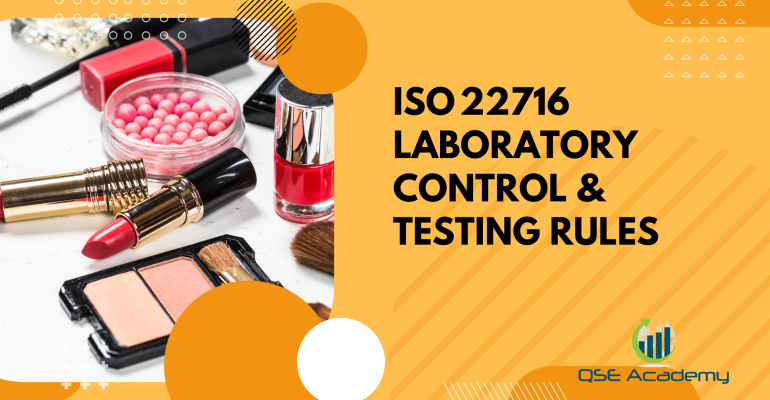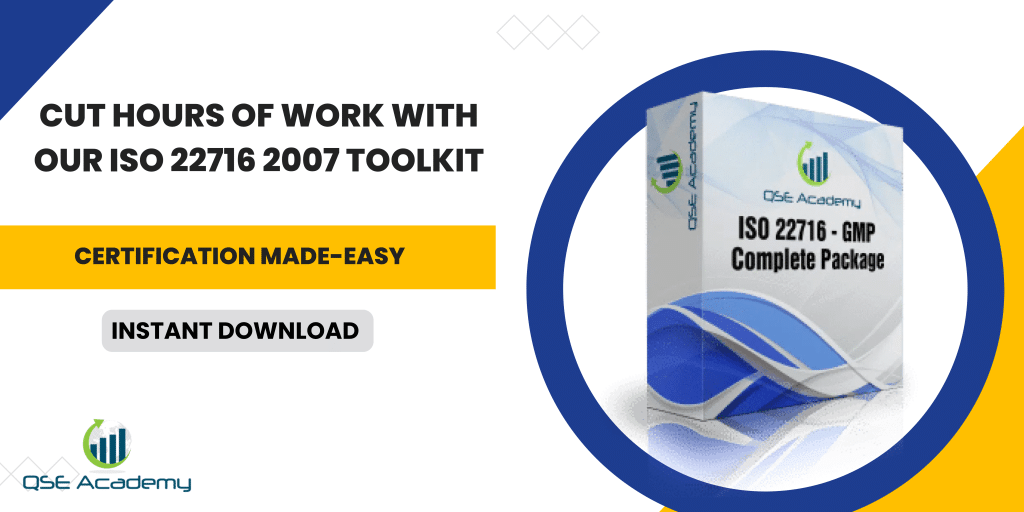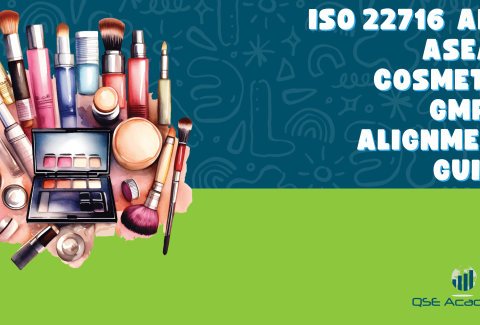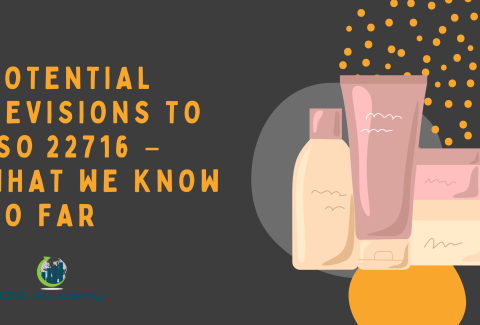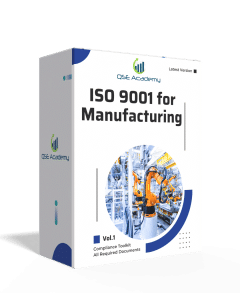ISO 22716 Laboratory Control & Testing Rules
Last Updated on October 24, 2025 by Hafsa J.
Why Laboratory Controls Matter in ISO 22716
Every cosmetic product that reaches the shelf tells a story—and that story begins in the lab.
In my experience, laboratories are where the invisible side of quality happens. You can’t see microbial counts, pH balance, or preservative stability, but one wrong result can undo weeks of production work.
ISO 22716 dedicates an entire section to laboratory controls because testing isn’t just a formality—it’s the proof that your product is safe, stable, and consistent. Without that proof, even the most beautiful formula becomes a liability.
This guide will walk you through:
-
How ISO 22716 defines laboratory control and testing expectations.
-
Practical steps to manage sampling, testing, and documentation.
-
Common pitfalls that lead to unreliable results or failed audits.
-
Proven methods to build confidence in your data and your decisions.
Laboratory control isn’t about adding complexity—it’s about building trust through evidence. When your testing system is tight, every result supports your reputation.
Role of Laboratory Controls in ISO 22716 (Clause 8 Overview)
In ISO 22716, laboratory control is the safety net that catches problems before your customers do. It’s where science meets process—verifying that what you made actually meets the standard you promised.
The lab’s role goes far beyond testing finished products. It’s responsible for:
-
Checking the quality of raw materials before use.
-
Monitoring in-process samples to ensure consistency during production.
-
Confirming finished products meet specifications for safety, stability, and performance.
Every test result tells a story. A slightly off pH, an unexpected viscosity reading, or a microbiological spike—all of these are early warning signs. When your laboratory controls are strong, you catch issues when they’re small and fix them before they reach the shelf.
Pro Tip:
Align every lab test directly with your product specifications. Each parameter you measure—whether it’s density, color, or microbial count—should link back to a defined acceptance range. That connection is what makes your testing purposeful and defensible.
Common Pitfall:
Treating testing as an isolated task instead of part of the production process. When labs work separately from manufacturing, data becomes reactive instead of preventive. Integration between teams keeps everyone accountable for the same outcome: quality that holds up under scrutiny.
In short, laboratory control under ISO 22716 isn’t about ticking boxes—it’s about making your quality system evidence-based.
Sampling Procedures & Sample Identification
Every reliable test starts with a reliable sample. ISO 22716 emphasizes that sampling isn’t a casual task—it’s a controlled process that directly impacts the accuracy of your results. If the sample is wrong, everything that follows is meaningless.
Here’s what the standard expects:
-
Representative sampling: Each sample must truly reflect the batch or material being tested. Avoid convenience sampling (like scooping from the top of a drum).
-
Clean, suitable containers: Use sterile or appropriate vessels that won’t react with the sample.
-
Proper labeling: Every sample should include product name, batch number, date, sampler’s initials, and storage conditions.
-
Controlled storage: Samples must be handled and stored under defined conditions to preserve integrity until testing.
I’ve seen many labs lose control at this very step—samples mislabeled, containers reused, or traceability lost because notes were made “later.” It’s never intentional, but it’s enough to raise red flags during an audit.
Pro Tip:
Use pre-coded, tamper-evident labels tied directly to your batch record. That small step creates a clean audit trail from production floor to laboratory bench.
Common Pitfall:
Skipping environmental considerations during sampling—like taking microbiological samples in a dusty area or near open containers. Contamination introduced at sampling often looks like a failed batch when, in reality, it’s a process flaw.
Accurate testing starts here. When sampling is deliberate, traceable, and documented, your lab results will speak with authority—and auditors will see that your control starts long before the analysis.
Testing of Raw Materials, In-Process, and Finished Products
Testing is where your laboratory brings GMP to life. ISO 22716 requires that every stage—raw materials, in-process samples, and finished products—undergoes testing suited to its purpose. Each step confirms that what you plan to deliver is exactly what you intended to make.
Raw Material Testing
Before production even starts, raw materials must be checked for identity, purity, and conformity. A supplier’s certificate of analysis (CoA) helps, but it’s not enough on its own.
In my experience, too many companies skip identity tests on incoming materials to “save time.” But when a supplier mix-up happens, the cost of that shortcut multiplies fast.
Pro Tip:
At minimum, verify identity for every new lot of critical ingredients—especially active substances, colorants, and preservatives.
In-Process Testing
These checks are your early warning system. ISO 22716 expects you to confirm that the process stays within control—monitoring pH, viscosity, temperature, or appearance while manufacturing is still ongoing.
Pro Tip:
Integrate your in-process checks into your batch record. Record results immediately, not at the end of the shift. Real-time data keeps your production team alert and accountable.
Common Pitfall:
Waiting until final testing to discover problems that could have been corrected hours earlier. Early detection saves time, material, and frustration.
Finished Product Testing
This is your final verification before release. You’re confirming that the product meets all defined specifications—chemical, physical, and microbiological.
Key checks include:
-
Appearance, odor, and color.
-
pH and viscosity consistency.
-
Microbial limits and preservative effectiveness.
Real Example:
One cosmetics company I worked with standardized its test specifications for every product family—creams, gels, toners. It not only reduced confusion but also improved release times because QA didn’t have to interpret results from scratch for each product.
Common Pitfall:
Relying solely on historical data or skipping testing for “low-risk” batches. ISO 22716 expects evidence every time, not just when things go wrong.
When testing is consistent across all stages, you build a safety net that catches errors before they reach your customer—and that’s the real purpose of laboratory control.
Laboratory Equipment, Calibration & Maintenance
Even the most skilled analyst can’t produce reliable results with unreliable equipment. ISO 22716 expects laboratories to maintain calibrated, well-maintained instruments—because data is only as good as the tools used to collect it.
Your lab equipment should be:
-
Fit for purpose: Chosen for accuracy, sensitivity, and the type of product you test.
-
Regularly calibrated: Using certified reference standards traceable to national or international systems.
-
Maintained and cleaned: According to documented schedules and procedures.
-
Clearly labeled: Showing the calibration status, last calibration date, and next due date.
In one audit I attended, a company’s results were perfectly within spec—but their pH meter was six months overdue for calibration. The findings weren’t about the result; they were about credibility.
Pro Tip:
Maintain a calibration and maintenance logbook (digital or manual). Include the equipment ID, frequency, calibration standards used, and the person responsible. It’s simple, but it builds undeniable traceability.
Common Pitfall:
Relying solely on third-party calibration certificates without verifying performance in-house. Always confirm the instrument’s accuracy with control samples or checks before use.
Real Example:
A cosmetics lab I supported introduced quick verification checks before each testing session—just a five-minute pH and balance check. That tiny habit caught small drifts early and saved them from major retesting later.
Equipment control might not feel glamorous, but it’s what turns your test results into hard evidence. Without it, even perfect data loses its power.
Analytical Method Validation and Documentation
Testing isn’t just about running samples—it’s about proving that your methods actually work for their intended purpose. ISO 22716 expects laboratories to use validated or verified analytical methods, meaning you’ve demonstrated that your test reliably delivers accurate, repeatable results for your specific products.
Here’s how to approach it:
-
Validated methods are those you’ve tested in-house or adopted from recognized standards (like ISO or pharmacopoeias) and confirmed they perform correctly with your product matrix.
-
Verified methods are existing methods you’ve checked to ensure they still apply to your product’s characteristics.
In simple terms, validation is about confidence. If your lab can’t show that a method works under your actual conditions, your results are just numbers, not proof.
Pro Tip:
Keep a method validation summary that’s concise, clear, and easy to retrieve during audits. It should describe parameters like accuracy, precision, linearity, detection limits, and robustness—all written in plain language.
Common Pitfall:
Using supplier-provided test methods “as is.” Just because it worked in their lab doesn’t mean it will behave the same with your raw materials or instruments. Always verify performance in your own environment.
Real Example:
A cosmetic lab I worked with once struggled with inconsistent viscosity readings. The issue wasn’t the product—it was the method. After verifying and adjusting the spindle speed and sample temperature, results stabilized immediately. That’s method control in action.
Validation doesn’t have to be overly technical—it just needs to be documented, justified, and reproducible. When your methods are proven reliable, your data stands up to any question.
Retention Samples & Record Archiving
Once a batch is tested and released, your job doesn’t end there. ISO 22716 requires manufacturers to keep retention samples and laboratory records as evidence that every product can be traced and re-evaluated if needed. Think of it as your safety net for future investigations or regulatory reviews.
Here’s what that looks like in practice:
-
Retention samples: Keep a representative quantity of every finished batch and critical raw material. Store them under the same—or simulated—conditions as your marketed product.
-
Identification: Each sample must clearly show product name, batch number, production date, and storage conditions.
-
Accessibility: Samples should be easy to retrieve for follow-up testing, complaint investigations, or stability checks.
-
Storage time: Hold them for at least the product’s shelf life + one year, unless local regulations require longer.
Pro Tip:
Designate a controlled retention area that’s separate from production stock, with temperature and humidity monitoring. Label shelving by year or product type—it keeps audits quick and prevents mix-ups.
Common Pitfall:
Treating retention as an afterthought—samples stored in random cupboards, no monitoring, no record of what’s been discarded. That kind of chaos raises doubts about the rest of your control system.
Real Example:
A client once discovered that consistent humidity in their retention room prevented packaging degradation and gave them reliable data for future stability reviews. The fix was cheap—just better storage discipline.
Records matter just as much. Keep test reports, calibration logs, and validation data organized and backed up. When something goes wrong months later, those records will protect your credibility and your certification.
Retention isn’t bureaucracy—it’s insurance for your quality system.
Handling Out-of-Specification (OOS) Results
No one likes seeing an unexpected result, but in GMP, how you handle it matters far more than the failure itself. ISO 22716 expects laboratories to have a structured, transparent process for dealing with Out-of-Specification (OOS) results—because a calm, consistent response protects both product quality and credibility.
Here’s the basic flow:
-
Identify immediately. As soon as a result falls outside the defined limit, flag it and isolate the affected material or batch.
-
Document everything. Record who found it, when, and under what conditions.
-
Investigate thoroughly. Check for possible causes—sample mix-ups, instrument drift, calculation errors, or real product issues.
-
Involve QA. They decide whether retesting, reprocessing, or rejection is justified.
-
Record and trend. Track OOS cases over time to spot recurring patterns or training gaps.
In my experience, the worst response to an OOS is panic—or silence. Some labs rush to retest until they “get a good number,” which only makes matters worse. Auditors can tell when you’re chasing results instead of finding causes.
Pro Tip:
Use a simple OOS investigation template that walks you through cause, corrective action, and final QA decision. Having it standardized removes emotion and adds consistency.
Common Pitfall:
Adjusting acceptance limits to make data fit. That’s not problem-solving—it’s avoidance. Regulators view it as data manipulation, and it can cost your certification.
Real Example:
One cosmetic lab I helped built a tiered OOS procedure—technical review within 24 hours, QA review within 48 hours, and CAPA initiation if confirmed. The clarity of that process cut investigation time in half and turned a stressful task into routine quality control.
Handled correctly, an OOS result isn’t a setback—it’s proof your system works. It shows that you detect, investigate, and correct before customers ever notice.
FAQs – ISO 22716 Laboratory Control & Testing
Q1: What’s the difference between “testing” and “control” under ISO 22716?
Testing is the act of measuring or analyzing—pH, viscosity, microbial limits, and so on.
Control is the system around those tests: sampling, documentation, calibration, validation, and release decisions.
In short, testing gives you data; control gives that data meaning and reliability.
Q2: How long should laboratory test records and samples be retained?
Generally, ISO 22716 recommends keeping test data and retention samples for at least the product’s shelf life plus one year.
If national regulations require longer, follow those timelines. The key is consistency—don’t discard anything before your internal retention policy allows it.
Q3: Can small cosmetic manufacturers outsource testing?
Yes—but the responsibility doesn’t disappear. You must evaluate and approve your external laboratory, verify their competence, and make sure their methods and documentation meet ISO 22716 expectations.
Keep copies of their accreditation certificates and quality agreements as evidence of control.
Q4: What should I do if I get an inconsistent or suspicious lab result?
Don’t ignore it or retest blindly. First, check the basics—sample labeling, equipment calibration, and method application. If the issue persists, treat it as an OOS investigation and document every step. Transparency matters more than perfection.
Key Takeaways and Next Steps
Strong laboratory control is the heartbeat of ISO 22716 compliance. It’s what turns data into trust. When your sampling, testing, and documentation systems are consistent, you don’t just meet GMP—you create a process that speaks for itself during every audit and every product release.
Here’s what to keep in mind:
-
Sampling must be representative and traceable.
-
Equipment should always be calibrated, labeled, and verified.
-
Methods need to be validated and documented, not just assumed to work.
-
Out-of-spec results are opportunities to strengthen—not shame—your system.
In my experience, the best laboratories are those that make discipline visible—clean benches, organized logs, and staff who understand why precision matters. It’s not about perfection; it’s about control you can prove.
If you’re ready to take your lab to that level, QSE Academy’s ISO 22716 Laboratory Toolkit can help. It includes ready-to-use templates for sampling plans, test logs, calibration schedules, validation summaries, and OOS investigation reports—all designed to make your lab compliant, confident, and audit-ready.
Start building a lab that defines quality—not just tests for it. Explore QSE Academy’s resources today and strengthen the foundation of your GMP system.
Whether it’s ISO 9001, ISO 22000, or the cosmetics-focused ISO 22716, I’ve spent my career I’m not here to call myself an expert—I prefer “enthusiast” because I truly love what I do. When I’m not writing about standards, you’ll probably find me playing Piano 🎹, connecting with people, or diving into my next big project💫. I’m an engineer specialized in the food and agricultural industry
make ISO standards less intimidating and more approachable for everyone.
turning complex jargon into clear, actionable steps that businesses can actually use.
There’s something incredibly rewarding about helping people navigate food safety and quality management systems
in a way that feels simple, practical, and even enjoyable.
I have a Master’s in QHSE management and over 12 years of experience as a Quality Manager
I’ve helped more than 15 companies implement ISO 9001, ISO 22000, ISO 22716, GMP, and other standards
My clients include food producers, cosmetics manufacturers, laboratories, and service companies
I believe quality systems should be simple, useful, and efficient.

